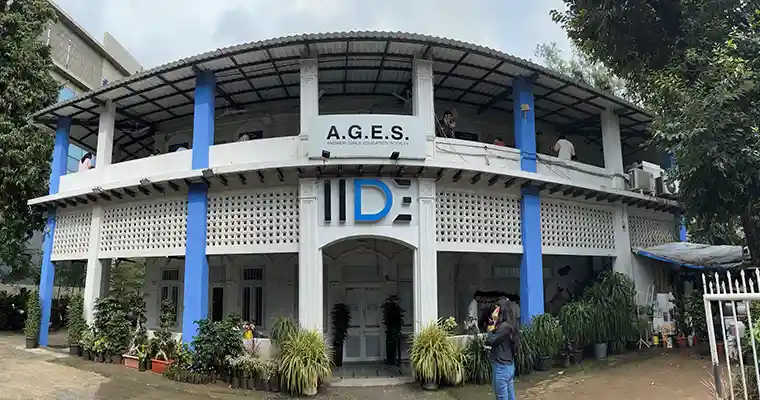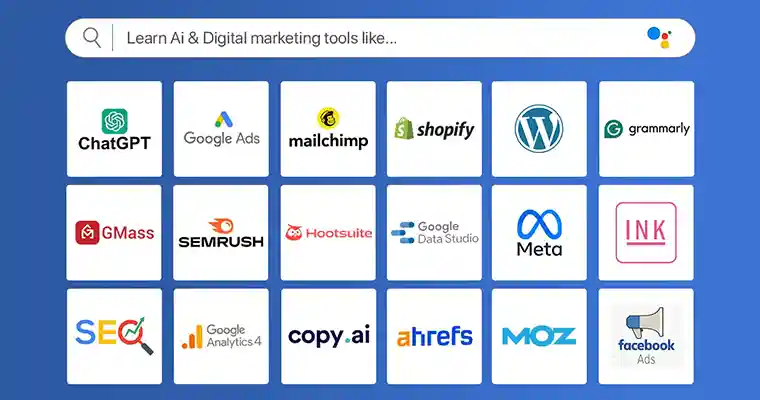Lazada, a formidable player in the Southeast Asian e-commerce landscape, has continually achieved remarkable milestones since its inception, carving out a distinct niche within a fiercely competitive market.
This comprehensive case study delves into the dynamic marketing strategy of Lazada group. Unveiling a strategic orchestration of diverse campaigns, the brand fortifies its marketplace presence. Additionally, this study presents an exhaustive exploration of Lazada’s digital footprint across social media platforms, offering valuable insights into its influential online presence.
Embarking on this journey, let’s first gain a profound understanding of Lazada, a force to be reckoned with in the e-commerce realm. By delving into the core of marketing strategy of Lazada, we unravel a tapestry of innovative tactics that have propelled the brand’s success, allowing it to navigate the complex e-commerce landscape with finesse.
About Lazada

Established in 2012, Lazada Group is the main eCommerce stage in Southeast Asia. It was founded by Maximilian Bittner.
The company provides customers with an effortless shopping experience via mobile and web access, also its service allows multiple payment methods, which include cash on delivery, as well as customer care and free returns.
Today, Lazada is accelerating its growth across Indonesia, Malaysia, the Philippines, Singapore, Thailand, and Vietnam by focusing on business expansion and innovative initiatives. With its extensive coordination and established networks in the region, Lazada has become an integral part of the daily lives of consumers, and it aims to cater to 300 million customers by 2030.
Since 2016, Lazada has functioned as Alibaba Group’s flagship platform in Southeast Asia, harnessing the power of cutting-edge technology and infrastructure.
Mission: Lazada’s mission is to connect the world to Southeast Asia while providing a platform for Southeast Asian brands to expand their reach to a global audience.
What’s new with Lazada?
In the latest news regarding Lazada, Alibaba Group Holding Ltd. has made a significant investment of $845 million into the Southeast Asian online retail platform. This capital injection, as revealed in a recent regulatory filing in Singapore, further adds to Alibaba’s substantial investments in Lazada, which have totaled several billion dollars since gaining control of the business back in 2016. As of now, representatives from both Alibaba and Lazada have not provided any comments or responses regarding this development.
Buyer’s Persona of Lazada:

Buyer’s Persona
Name:
Sathvik
Location:
Bangalore
Age:
45 years
Profession:
IT Manager
Motivation
- Convenient online shopping.
- Quick and efficient order processing.
- Wide selection of products.
- High-quality products.
Interests & Hobbies
- Reading tech blogs.
- Playing Golf.
- Listening to classical music.
- Networking on LinkedIn.
Pain Points
- Incomplete or confusing product information.
- Slow website and checkout process.
- Difficult navigation and user experience.
- Product availability and stock information.
Social Media Presence
Marketing Strategy of Lazada
Lazada has ingeniously integrated a diverse array of marketing strategies to achieve its goal of driving customer purchases. Let’s delve into the insightful tactics employed by the company in the following section.
At the core of its approach, Lazada places a steadfast emphasis on expanding its customer base and amplifying revenue streams, particularly targeting individuals accessing the internet through various channels like desktops and mobile phones.
To achieve this, the Lazada group seamlessly incorporated the ‘Google AdWords’ flexible bid strategy. This strategic utilization of bid techniques equips organizations with the automation tools needed to optimize cost-per-click bids, effectively attaining objectives such as enhancing ROI, boosting conversions, minimizing acquisition costs, and increasing visibility.
Among its arsenal of tactics, Lazada strategically implemented the target outclassing share strategy. This dynamic approach empowered the online retailer to assert its dominance over key keywords compared to competitors. By leveraging the target outclassing share bid strategy, businesses can dynamically adjust their bids, aiming to outperform others within a predefined maximum cost per click.
Furthermore, this approach presented an opportune advantage, enabling Lazada to vie against strategic rivals. By targeting their competitors’ keywords, the company garnered visibility and engagement from an entirely new customer segment. This tactical maneuver allowed Lazada to determine its optimal maximum cost per click, effectively managing the cost required to outshine competitors’ placements.
In essence, Lazada’s adept incorporation of these strategic marketing initiatives underscores its commitment to capturing a wider audience and maintaining a competitive edge in the digital realm.

Enhancing Customer Experience
In association with Amorepacific, Lazada dispatched its first actual store in Singapore in December 2019. It gives an experiential purchaser shopping excursion to test items at the actual store and the accommodation of buying through the Lazada application.

From January to March 2020, the Amore Store on Lazada saw a 5X expansion in deals. More than 80% of clients were new Amorepacific purchasers, and 20% of purchasers were new Lazada clients.
Lazlive Initiative:
LazLive serves as a conduit for Lazada’s contribution to the local community, empowering them to cultivate essential skills within a rapidly evolving digital economy and discover fresh career avenues within its ecosystem.
Anchored in this commitment, Lazada initiated the Grassroot Livestreamers Incubation Program, offering young talents structured training to refine their skills as proficient live streamers. These skilled individuals collaborate with Lazada’s merchants who increasingly harness the potential of LazLive to connect with their customer base. With a resounding impact, the program has onboarded over 3,000 live streamers. Originating in Vietnam in November 2019, it has since expanded its footprint to encompass Thailand.
Dynamic Product Ads
To accomplish its third birthday celebration crusade objectives, Lazada utilized Facebook’s Dynamic Product Ads. A Dynamic Product Ad utilizes pixels to report when somebody sees a thing from your inventory or adds it to their social media shopping basket. If that individual doesn’t finish the buy around then, promoters can retarget the client with an advertisement that shows the item that they had been pursuing. By transferring its item inventory, Lazada had the option to show an assortment of items in a solitary promotion.

Tailoring their advertisements to individual clients, Lazada harnessed the power of Custom Audiences to reengage previous customers and entice them with fresh offerings. Furthermore, through Lookalike Audiences, the company expanded its horizons by identifying and engaging new customers who shared characteristics with its existing clientele.
Emerging as a trailblazer in Southeast Asia’s eCommerce landscape, Lazada is renowned for its social media prowess and unwavering commitment to fostering a robust digital marketing footprint. The brand’s digital influence is primarily concentrated on Instagram and Facebook. To delve deeper into Lazada’s digital marketing prowess, let’s explore its compelling presence across these platforms.
Digital Presence of Lazada
Nothing is stronger than a brand that uses marketing to increase brand awareness and brand preference. In a short period, it helps a company increase its market visibility and gain benefits from participating in various activities and events.
11.11 Deal – A Lazada Marketing Campaign
The most alluring purpose of selling your items on Lazada is the capacity to partake in its large number of campaigns, missions, gotten to by a great many clients.
Such missions aren’t restricted in size and degree: they range from gigantic occasions like its vigorously advertised Online Festival, which incorporates 11.11 and 12.12, to more modest week by week missions like the current ‘Become hopelessly enamoured’ occasion for Valentine’s Day.
Not exclusively does Southeast Asia’s biggest online business stage advance missions through huge standard adverts on its fundamental presentation page, however, it additionally drives paid traffic to obtain channels and email showcasing. For brands, such permeability is basic; Southeast Asian buyers progressively utilize online commercial centres to start their item venture, bypassing even web search tools.

Lazada guarantees huge web traffic during its greatest missions – the 11.11 deals occasion pulled in 10 million webpage visits in the initial 24 hours and accumulated multiple times the business volume when contrasted with non-crusade days.
Top Competitors of Lazada
In the vibrant and dynamic landscape of Southeast Asian e-commerce, Lazada stands as a prominent player with a mission to revolutionize online shopping. However, Lazada operates in a highly competitive environment, where several key rivals vie for the attention of the region’s digital-savvy consumers.
- Alibaba Group: While Lazada is part of the Alibaba Group, other Alibaba-owned platforms, such as Taobao and Tmall, also compete in the Southeast Asian market, offering a diverse range of products to consumers.
- Amazon: Amazon expanded its presence in Southeast Asia, including Singapore and Malaysia, and competes with Lazada by providing a vast selection of products and services through its platform.
- Zalora: Zalora specializes in fashion e-commerce and competes with Lazada in the fashion and apparel segment, offering a variety of clothing, footwear, and accessories to consumers in the region.
-
Shopee: Shopee, operated by Sea Group, poses fierce competition to Lazada with its mobile-centric approach, aggressive marketing, and extensive product range. It’s known for its user-friendly interface and strong presence across Southeast Asia.
-
Tokopedia: Tokopedia, primarily serving the Indonesian market, competes with Lazada by offering a wide variety of products and services, focusing on local customer needs and preferences.
With this, the case study comes to an end. Let us summarize in the coming section.
Conclusion
Even though Lazada is broadly reprimanded by certain business visionaries due to uncreative methodologies — executing a reasonable plan of action in unreclaimed districts, it is obvious that the achievements it made are truly astounding.
Additionally, the way that Lazada is named as an infamous organization, various financial speculators keep contributing rounds of subsidizing for territorial extension, setting up an ever-increasing number of auxiliaries in Southeast Asia. With the aggregate sum of financing it raised, US$ 647 million Lazada is one of the famous unicorns in the Southeast Asian startup scene.
Looking at the above information one can see that Lazada and its various marketing strategies have helped the company a lot and back its place as a strong market participant.
Liked our work? Interested in learning further? Do check our website for more. Also, if you’re interested in Digital Marketing, you can check out our Free Digital Marketing Masterclass by Karan Shah.
Let us know your thoughts on this case study in the comment section down below. Thank you for reading, and if you liked our then do share this in your circle.








Thank you for this case study it will help me in my business.